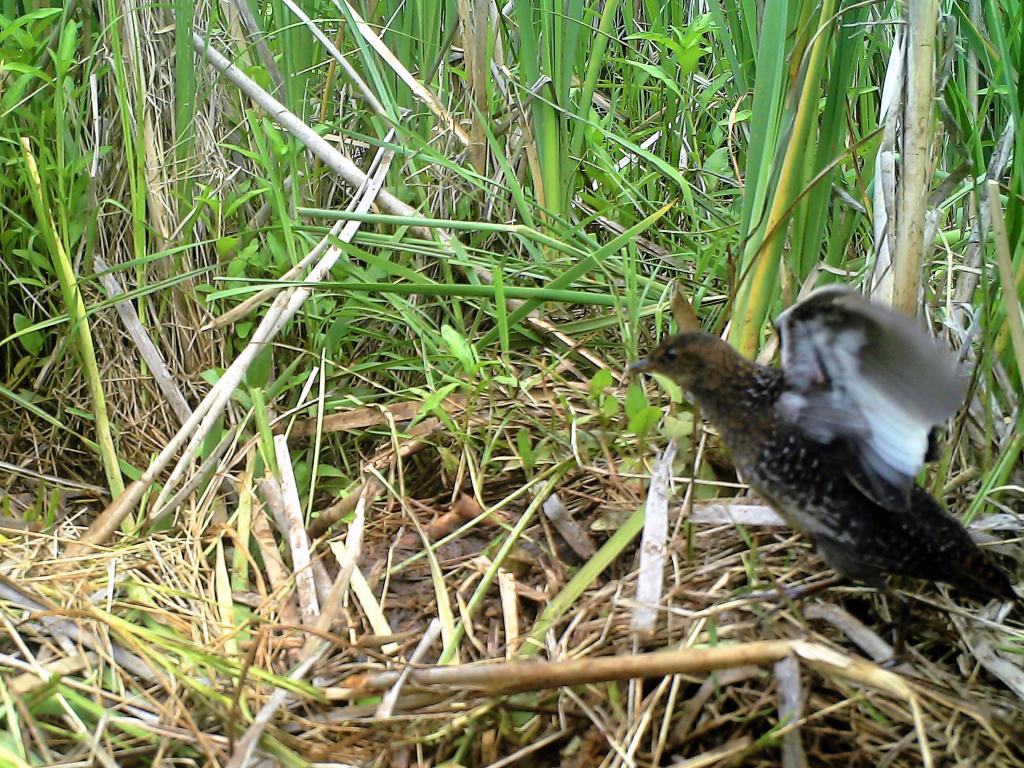New paper on the critically endangered White-winged Flufftail

First discovered and described in 1877 by Thomas Ayres and J.H. Gurney, the critically endangered White-winged Flufftail remains one of Africa’s most elusive and enigmatic species. Their low population numbers (ca. 250), cryptic behaviour, unknown auditory cues and preference for densely vegetated wetland habitats, make this species exceptionally difficult to study using traditional survey methods, and hence significant data deficiencies still exist.
Utilising an innovative survey methodology combining both camera traps and passive acoustic recorders, two significant discoveries related to the ecology of this threatened species were made. This method successfully established that this species does not breed exclusively in the Ethiopian Highlands and that an additional breeding population exists in South Africa. The combined use of camera and acoustic data provided the first recorded characterization of the species vocalization since its discovery in 1877 and allows for the refuting of calls previously attributed to the species. With the call confirmed, and breeding range redefined, we recommend the use of passive acoustic monitoring as a rapid means of noninvasively identifying the presence of this highly elusive species at other sites across its range in order to bolster conservation efforts for this critically endangered species.
Colyn, R. B., A. Campbell, and H. A. Smit-Robinson. 2020. The use of a camera trap and acoustic survey design to ascertain the vocalization and breeding status of the highly elusive White-winged Flufftail, Sarothrura ayresi. Avian Conservation and Ecology 15(2):12. https://doi.org/10.5751/ACE-01681-150212
